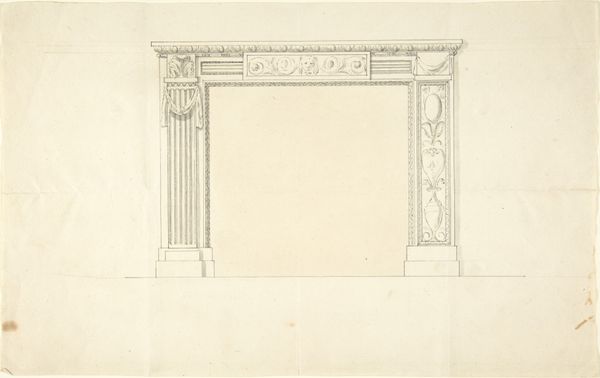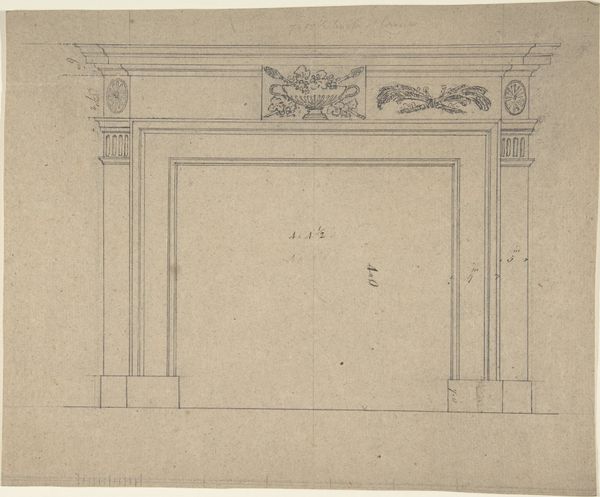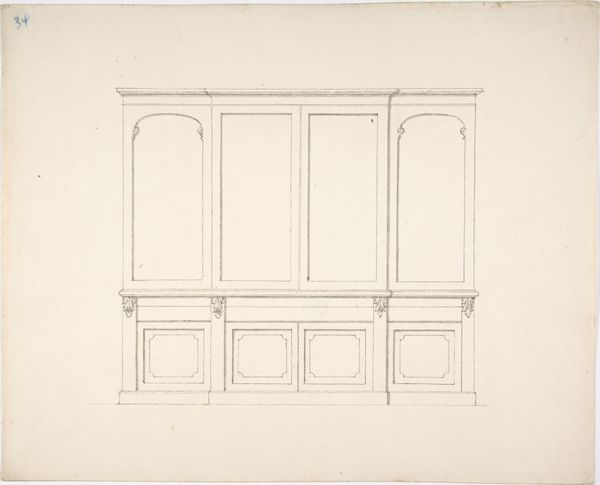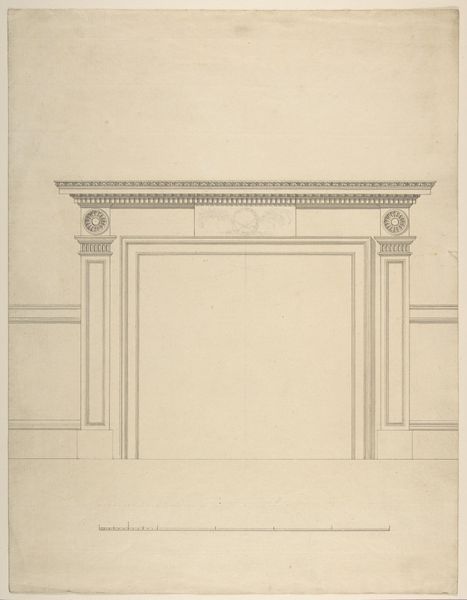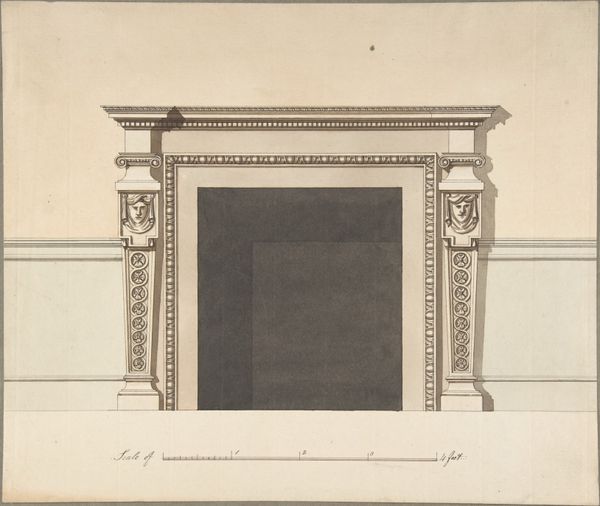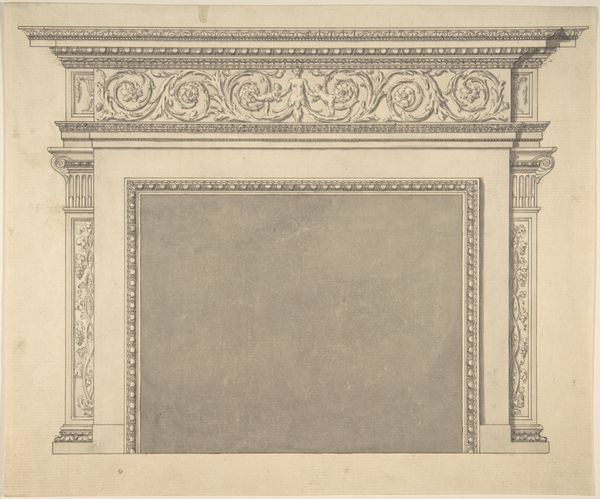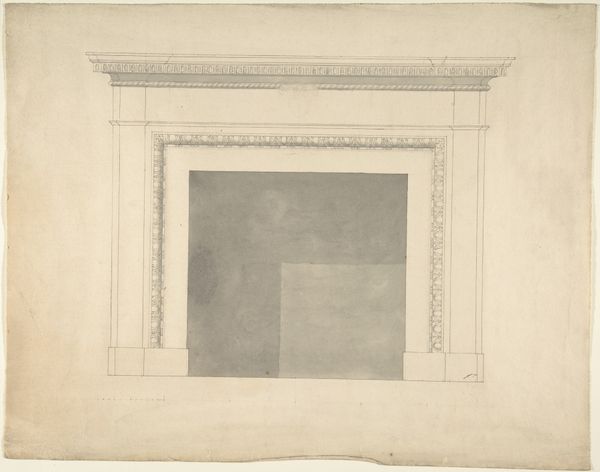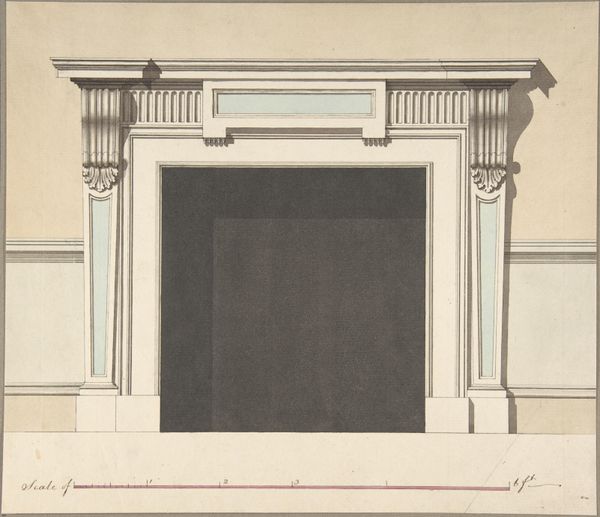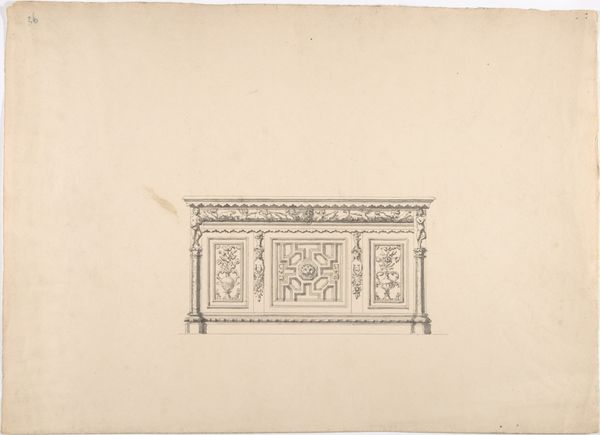
drawing, print, etching, architecture
#
drawing
#
neoclacissism
# print
#
etching
#
landscape
#
etching
#
form
#
line
#
architecture
Dimensions: height 160 mm, width 210 mm
Copyright: Rijks Museum: Open Domain
Editor: So, this etching from circa 1810-1830, titled "Schoorsteen met vrouwelijke hermfiguren" depicts a fireplace mantel with these rather severe-looking female figures. It's spare and precise, a real exercise in line. What stands out to you? Curator: What grabs my attention immediately are the herm figures themselves. Notice how they're integrated into the architecture? In a way, they represent a continuation of classical ideals, recalling caryatids found in ancient Greek temples. Editor: So, it's not just decoration? Curator: Precisely. The female figures aren't simply supporting the structure, they embody ideas, in this case likely related to domesticity, hearth and home and potentially guarding and nourishing flames. Consider, too, the wreaths each figure bears. What connotations do wreaths often carry? Editor: Victory, honor... but also mourning sometimes? Curator: All of those layers are important! They aren't casual choices; in Neoclassical art, every element works to communicate values, invoking collective memories of virtue. It is, I would say, less a source of heat than an embodiment of cultural warmth. Editor: That really changes my view of it. It felt cold and distant, but now I see the warmth, like a memory of a perfect home. Curator: Visual symbols work just like that. They may seem static, but they echo across time. I see classical aspirations married with images of women: these images are both rooted and timeless, constantly reshaped. Editor: Thank you. I’ll never look at fireplace decoration the same way again!
Comments
No comments
Be the first to comment and join the conversation on the ultimate creative platform.

